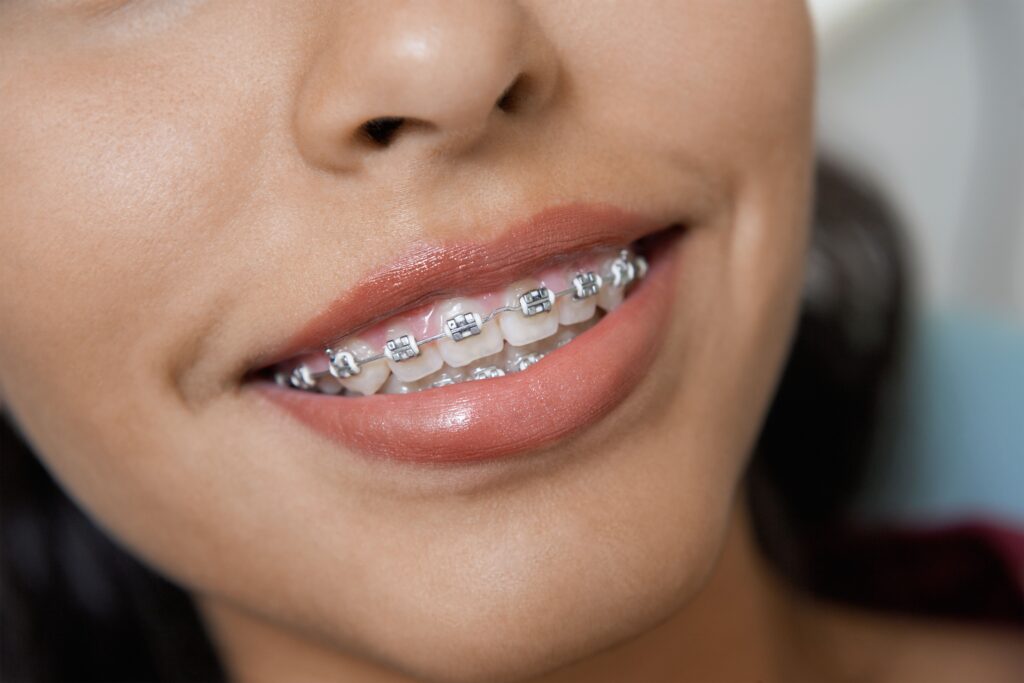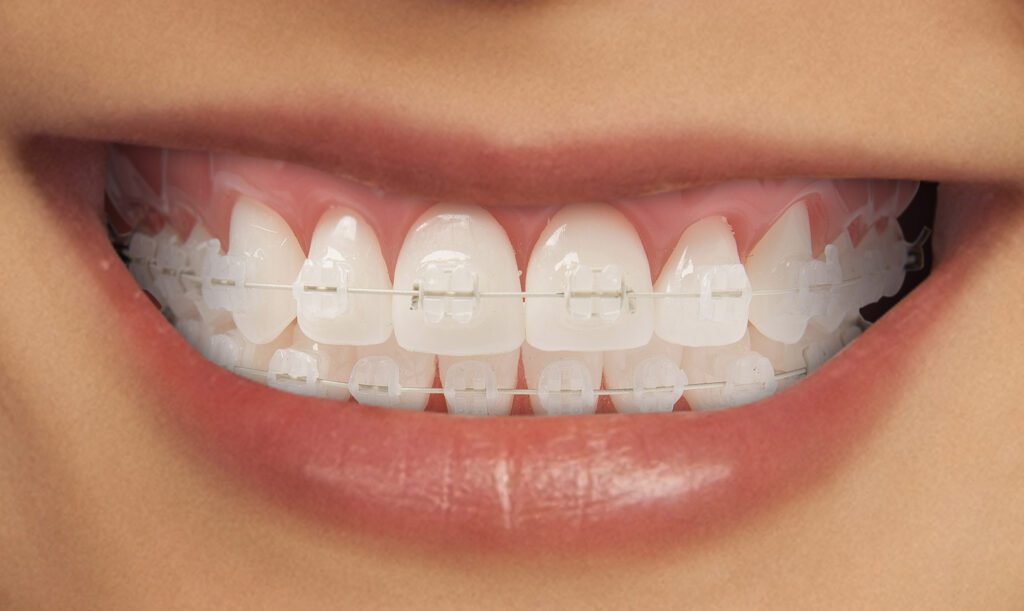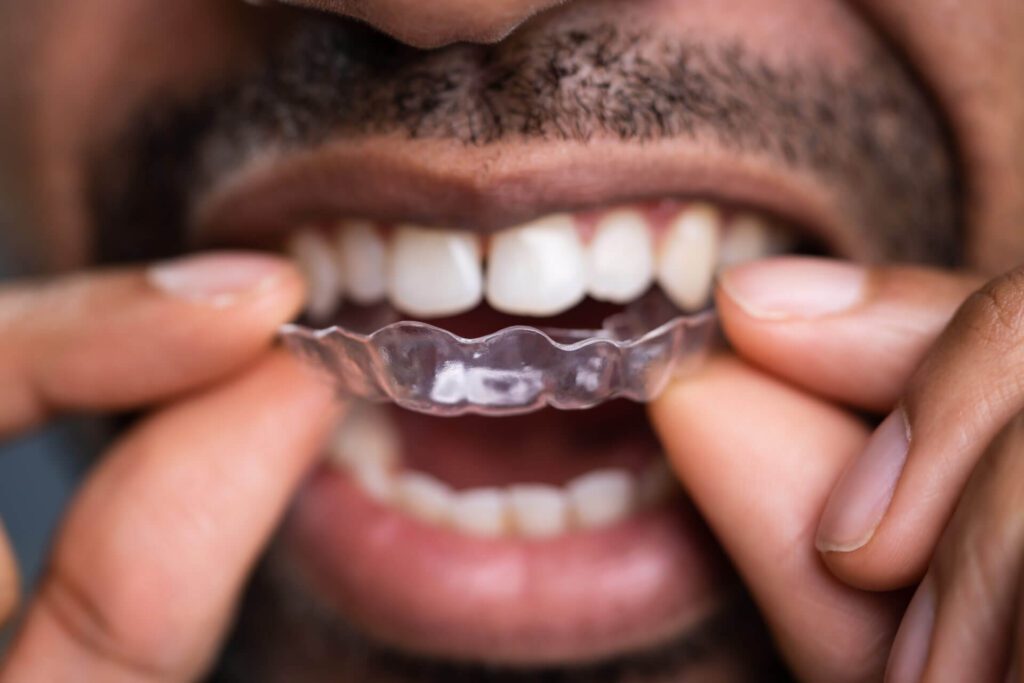There are several different types of braces used in modern orthodontics, and each one works in a slightly different way, but the main aim of braces for teeth is to straighten teeth.
Braces can do a lot more than just straighten teeth. In fact, they can line up your jaw and give you a better bite, space out crooked teeth, and close gaps in your smile.
Types of Adult Braces

Metallic – They are the easiest and fastest way to get your teeth aligned. This is due to reduced friction between the metallic wire and the metallic bracket slot. The only draw back is the esthetic concern.

Ceramic – In the quest to cure the esthetic concern brought about by the metallic brackets, clear/ceramic brackets are advocated. They are slightly bulkier and movement is slightly slower as compared to metallic brackets.

Clear aligners – unlike the metallic and ceramic brackets that work via pull, this exact there mechanism of action via push. The cases are carefully selected and may require more investigations as opposed to metallic and ceramic braces. Align bleach and bond is an alignment solution for adults whose main concern is the upper jaw alignment. It involves a brief alignment phase of up to 4 months, followed by 4-6 weeks of tooth whitening and if necessary masking to alleviate all esthetic concerns. It can either be metallic, ceramic or clear aligners.
Advantages of braces
A healthy, functional and attractive smile requires teeth that are straight and jaws that are well aligned. The goal of orthodontics is to correct the cosmetic and functional problems associated with teeth that are either overcrowded, have spaces between them, or that have shifted over time due to extractions, habits, or abnormal bite patterns.
After treatment, you are likely to experience the following benefits:
- Feel more confident
- Clean your straight teeth more effectively
- Enjoy a straight, comfortable and well-aligned bite
- Avoid tooth wear, crowding and other problems that can be caused by misalignment
- Less risk of developing serious spacing issues that may lead to permanent teeth extraction
Teeth misalignment treatment
Most people with mild malocclusion will not require any treatment. However, your dentist may refer you to an orthodontist if your malocclusion is severe.
Depending on your type of malocclusion, your orthodontist may recommend various treatments. These can include:
- braces to correct the position of the teeth
- removal of teeth to correct overcrowding
- reshaping, bonding, or capping of teeth
- surgery to reshape or shorten the jaw
- wires or plates to stabilize the jaw bone
Tender Care Dental
Tender Care Dental
Tender Care Dental
Tender Care Dental
Tender Care Dental
Tender Care Dental
Meet Our Doctors
Dr Gitonga Ndirangu graduated with a Bachelor of Dental Surgery (BDS) from the University of Nairobi in 2013. He is currently pursuing his Postgraduate Degree in Periodontology & Implant Dentistry.
Dr. Meera Shah graduated with a Bachelor of Dental Surgery (BDS) from Moi University in 2014. She specializes in routine dentistry, endodontics, cosmetic, and restorative dentistry.
Dr. Frankline Kidula graduated with a Bachelor of Dental Surgery (BDS) from the University of Nairobi in 2012. He is currently pursuing his Postgraduate Degree in orthodontics.
Dr. Johnson Mwangi graduated with a Bachelor of Dental Surgery ( BDS) from the University of Nairobi in 1991. An MBA (Stratgic Management) in 2006 and a post graduate diploma in Oral Implantology from the University of Pretoria and New York University.
Emergency Cases
Please feel welcome to contact our friendly reception staff with any general or medical enquiry call us.







